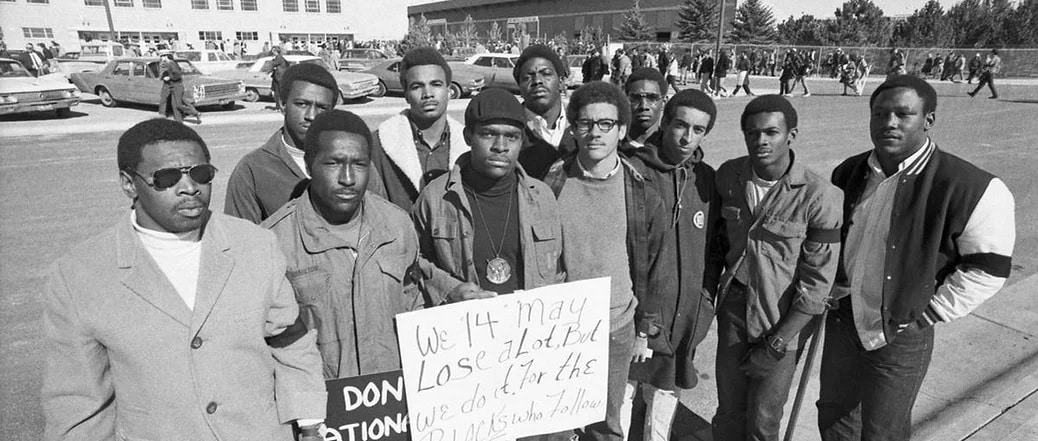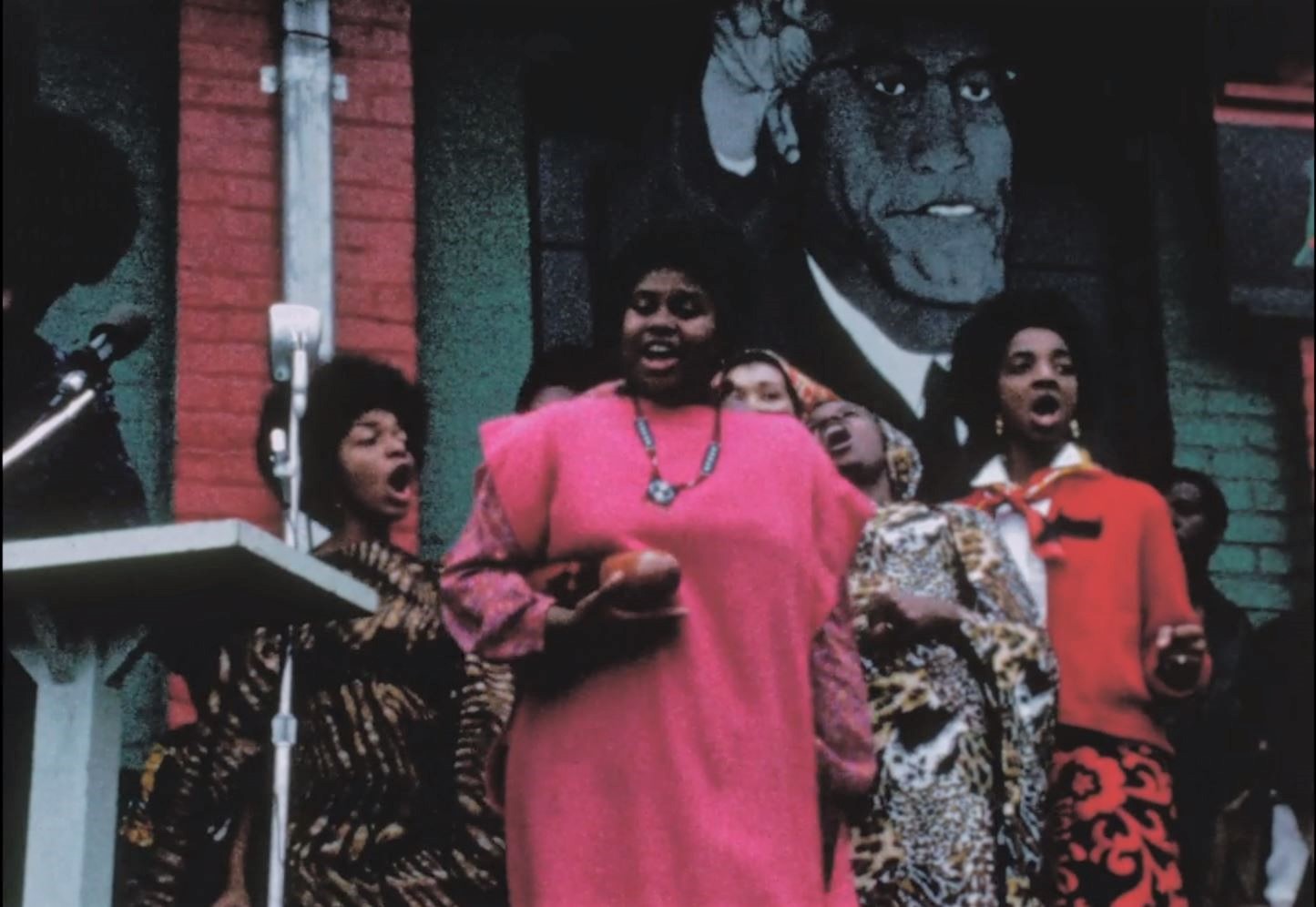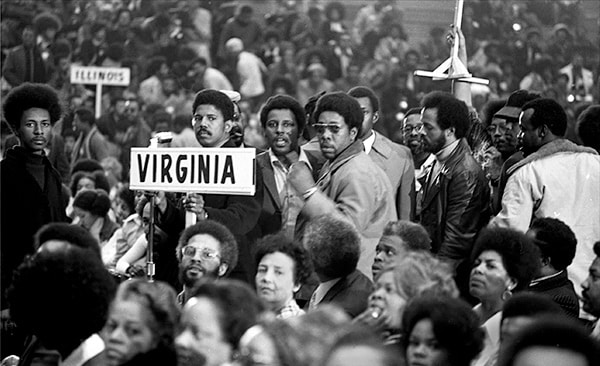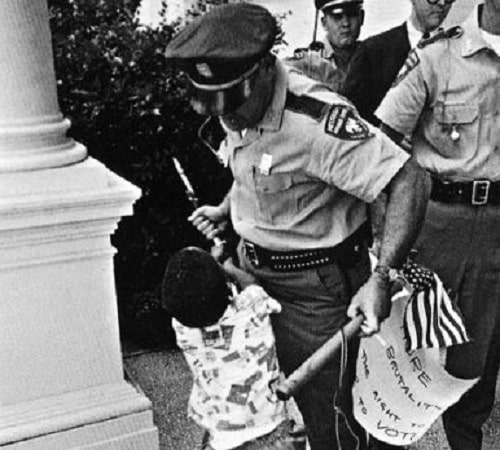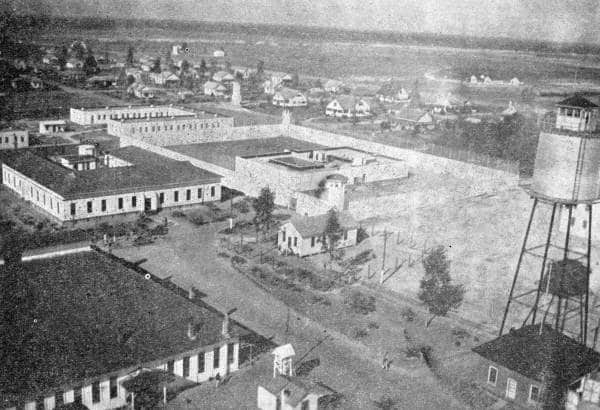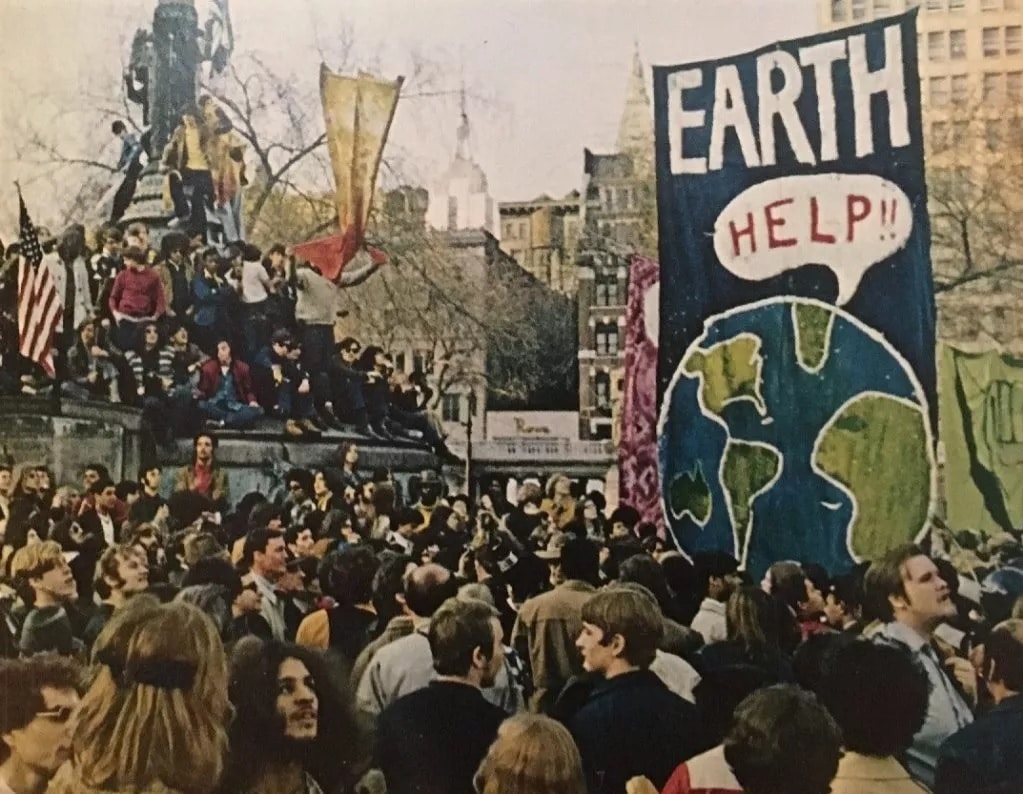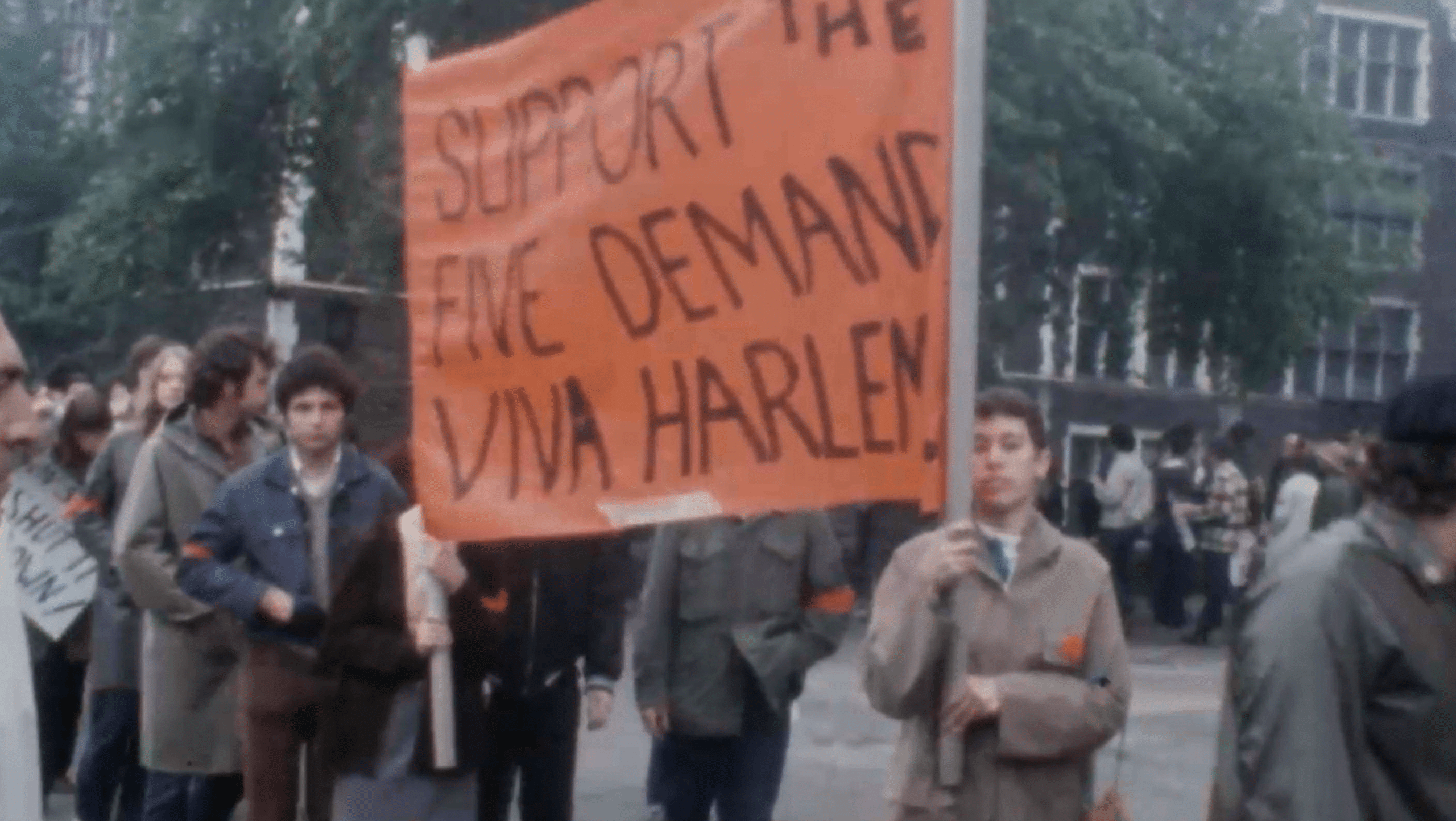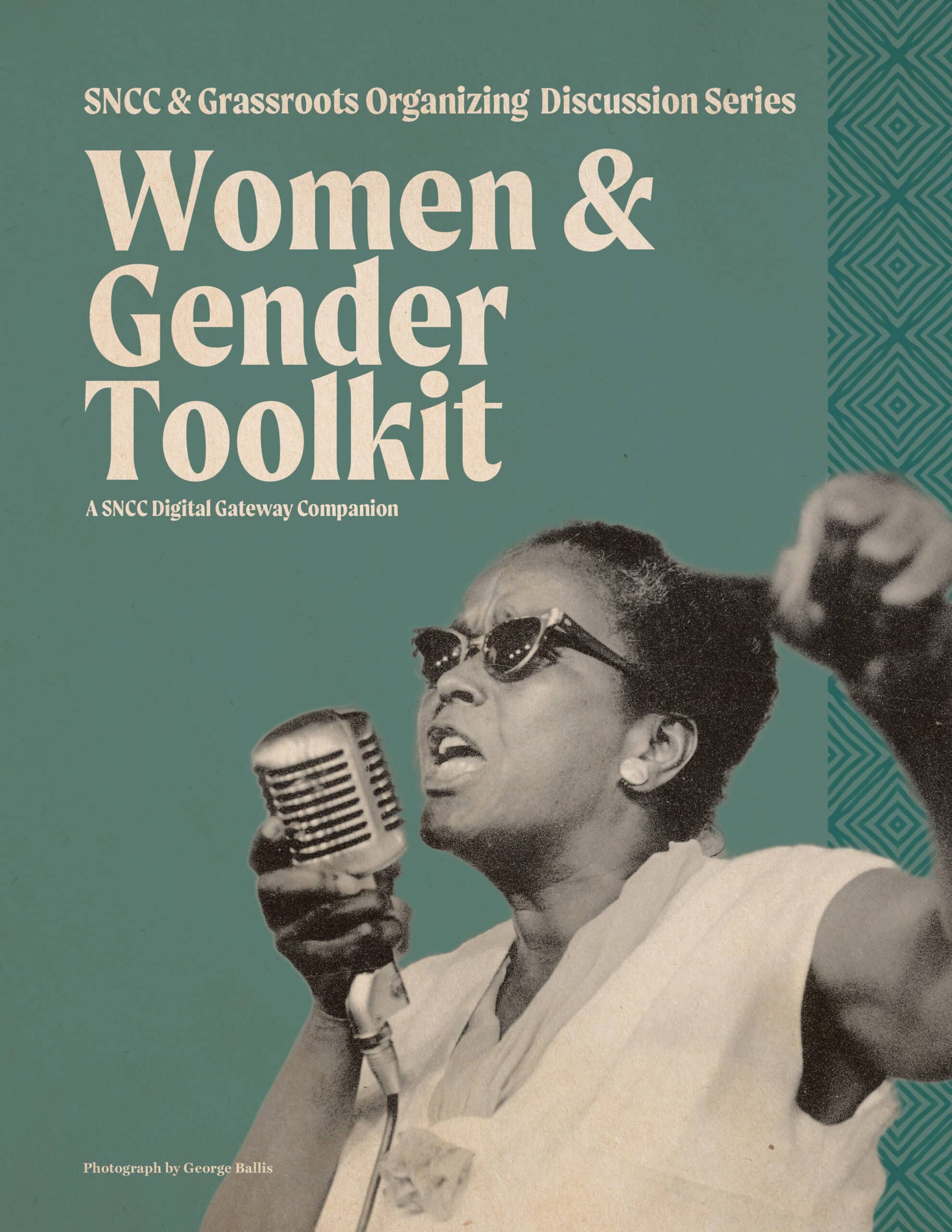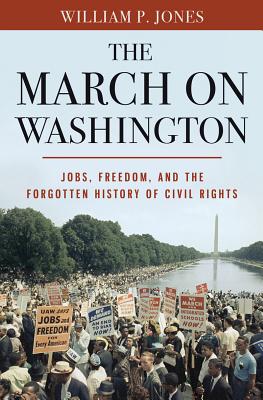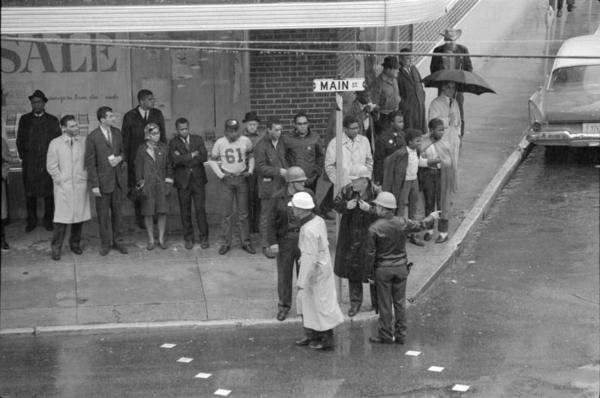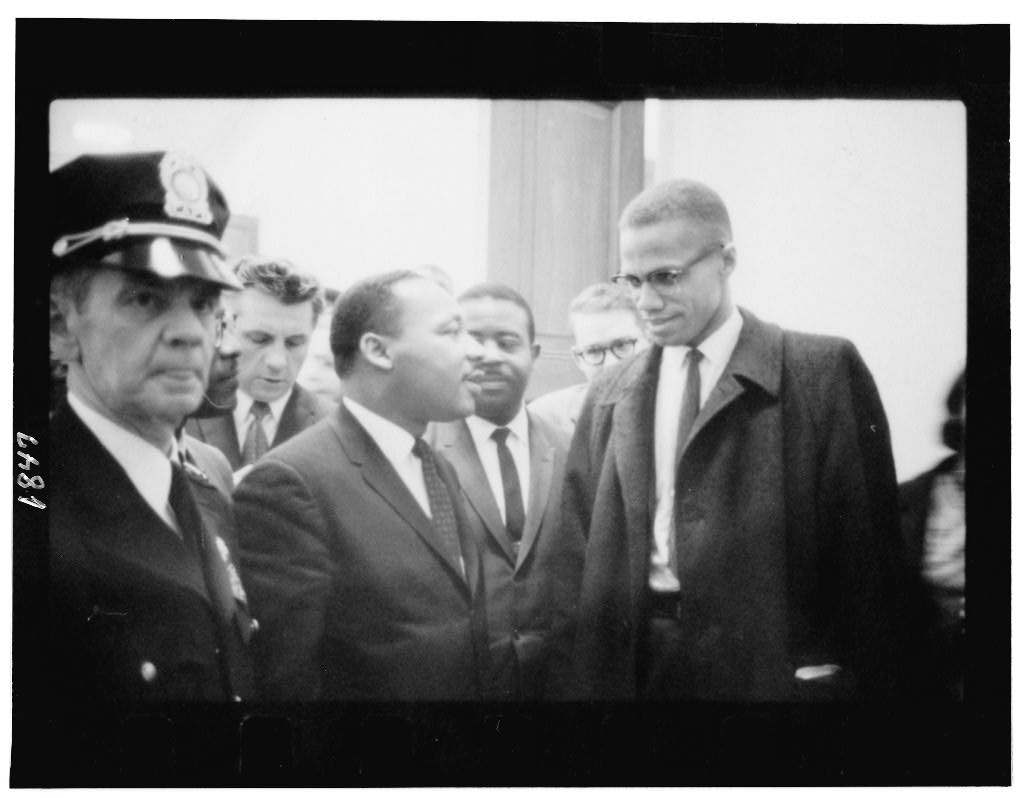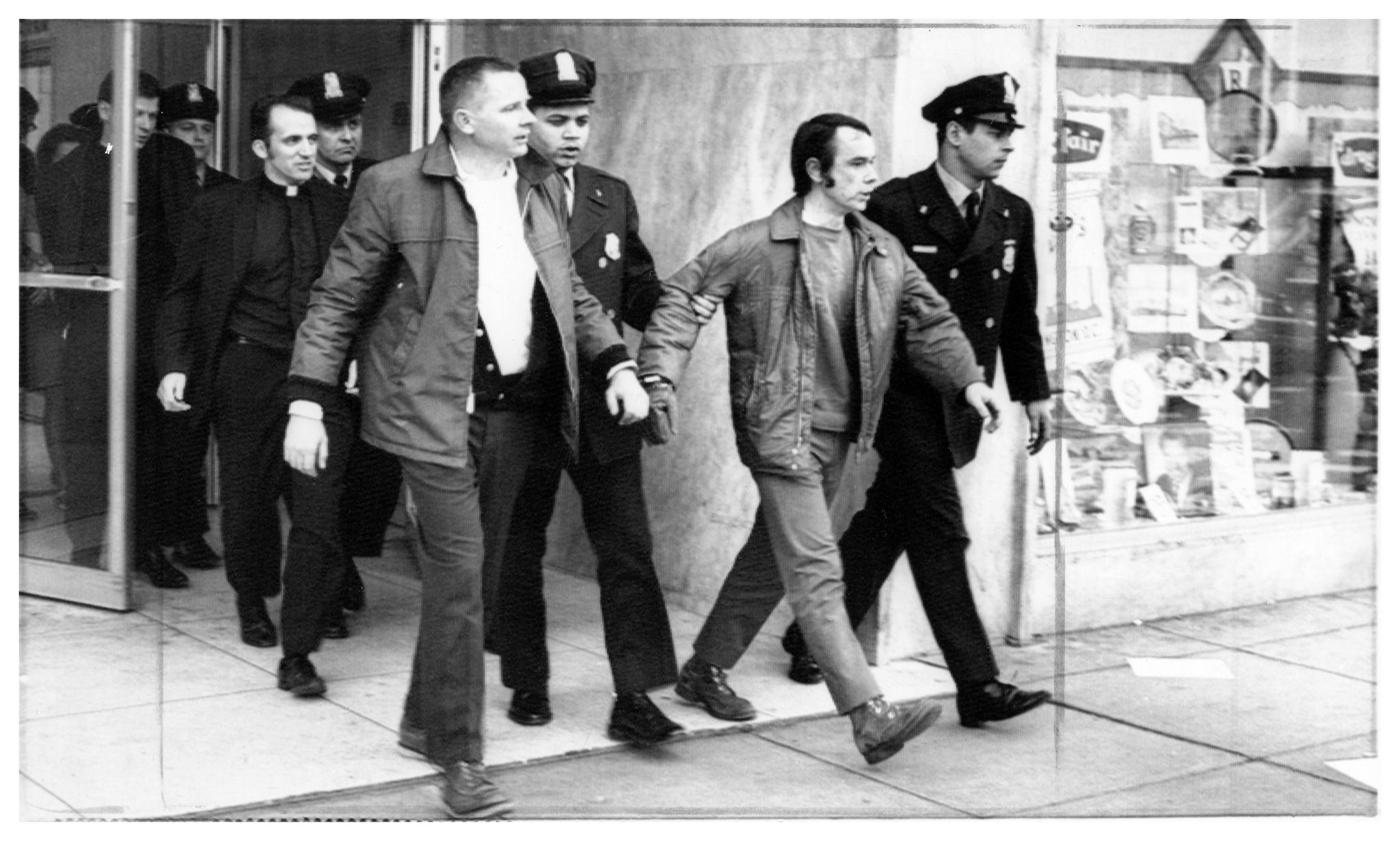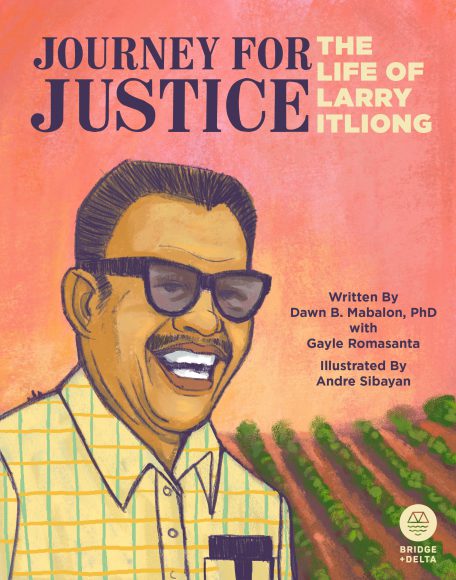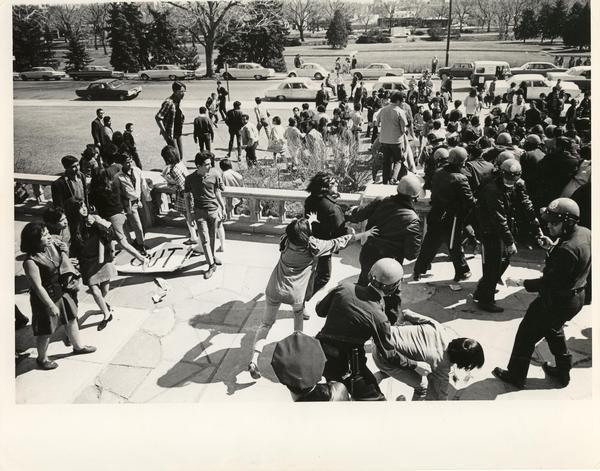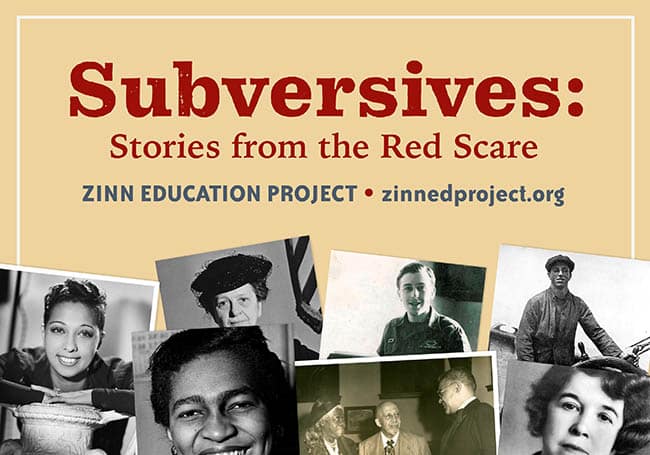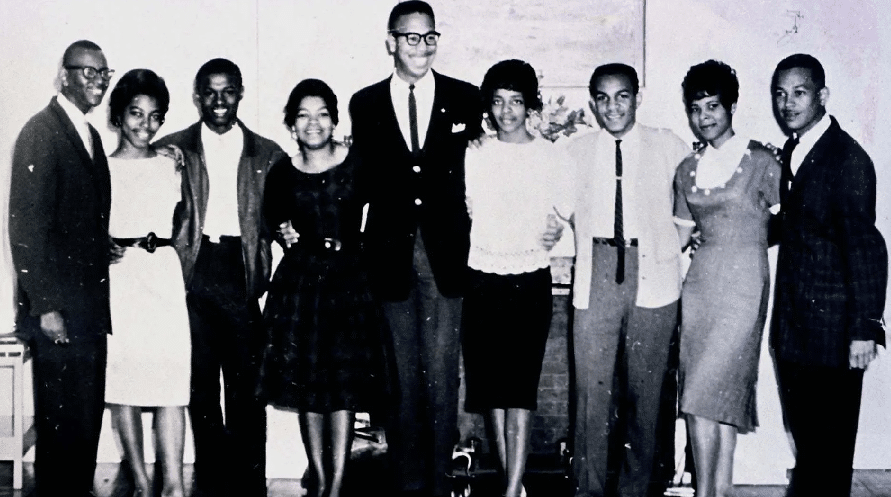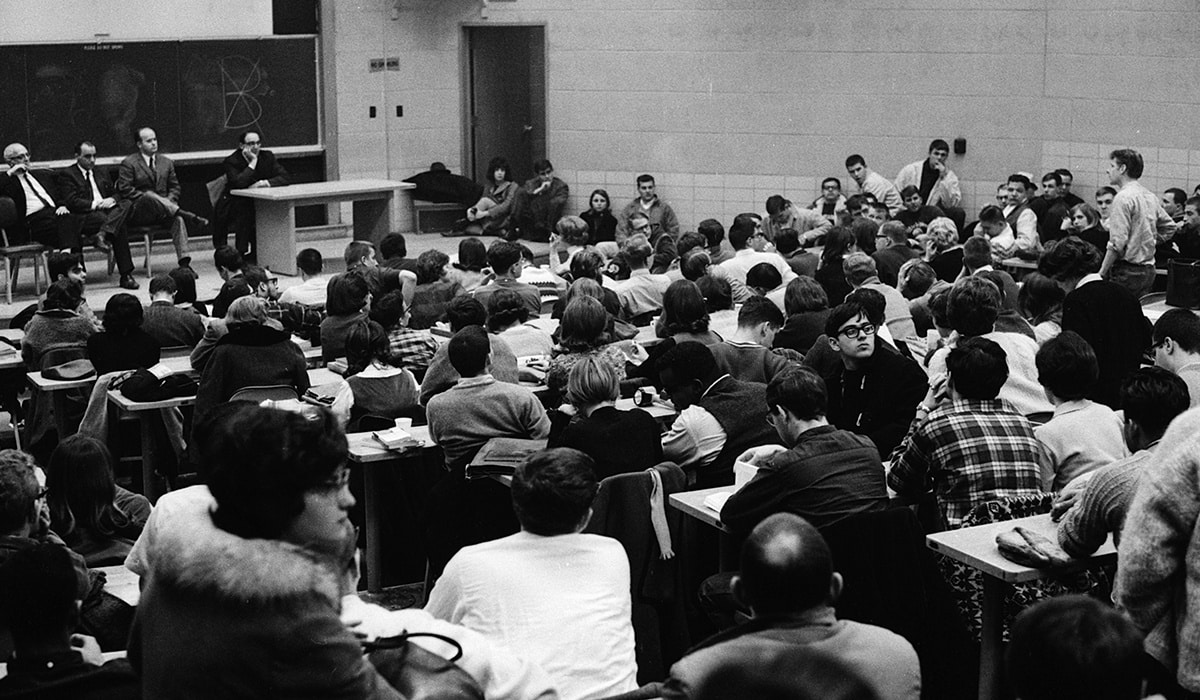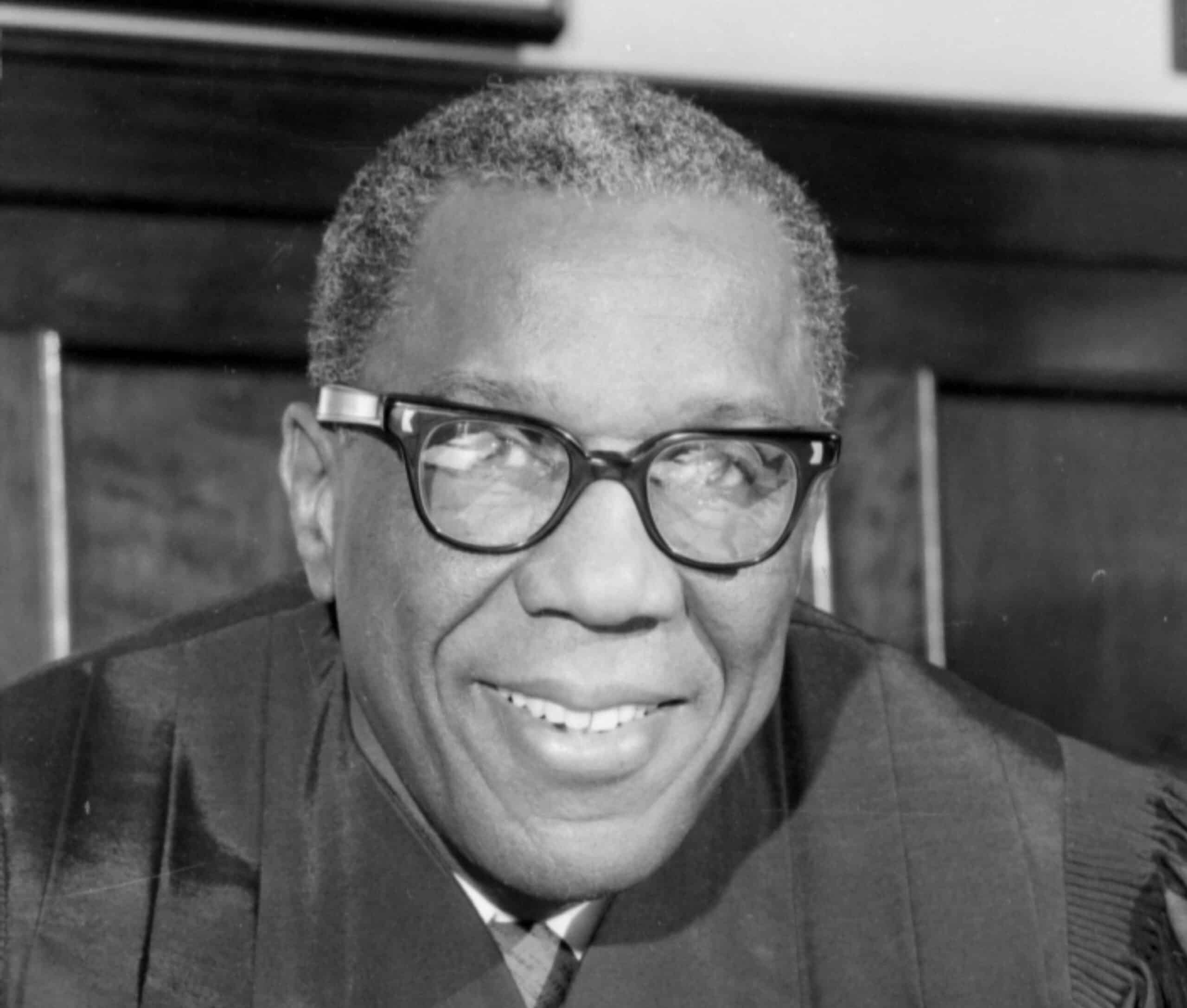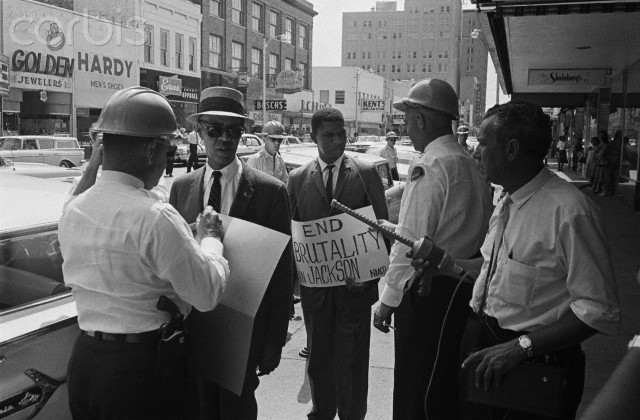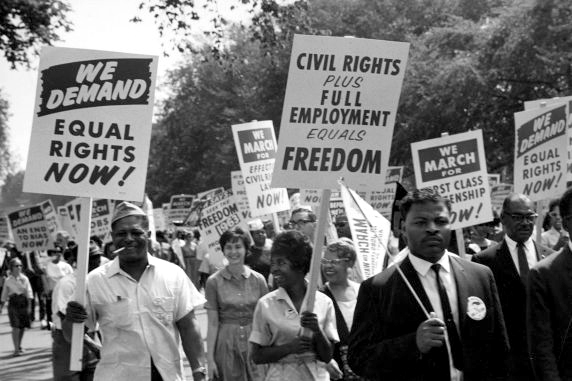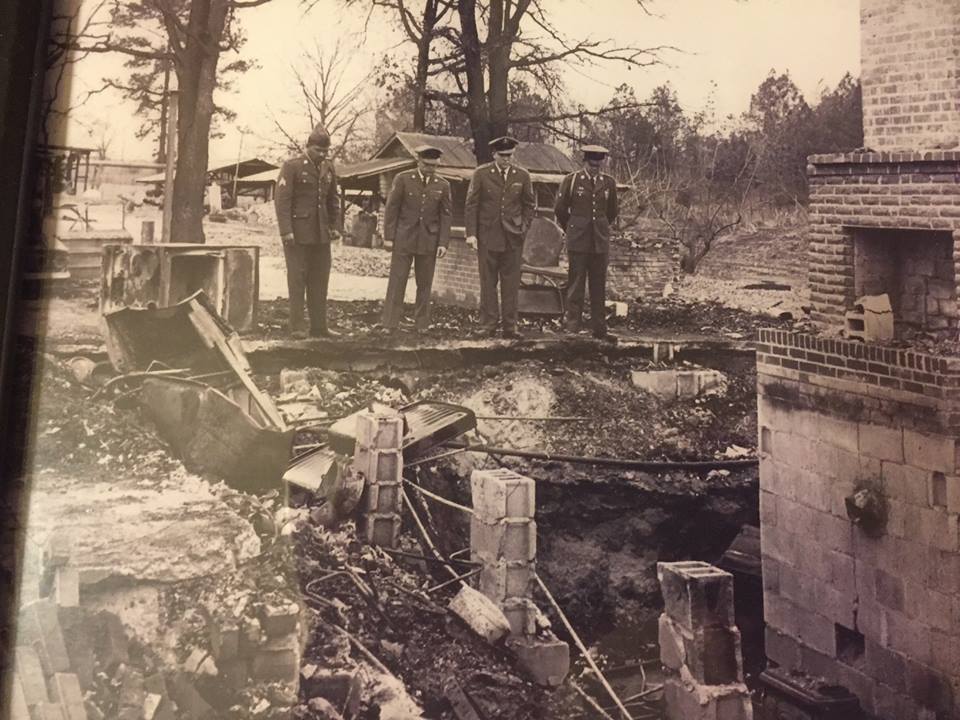Fourteen Black football players at the University of Wyoming were fired when their coach learned they wanted to wear black armbands during a game against Brigham Young University.
Continue reading
Opening of the Malcolm X Liberation University in Durham, North Carolina.
Continue reading
Thousands of Black leaders gathered to create a cohesive political strategy at the National Black Political Convention in Gary, Indiana.
Continue reading
Five-year-old Anthony Quin and his mother and siblings protested against the election of five Mississippi Congressmen from districts where Black people were not allowed to vote. Refused admittance, they sat on the steps and police-instigated mayhem ensued.
Continue reading
Prisoners at Florida State Prison in Raiford, Florida, staged a sit-down strike to protest prison conditions. The 700 incarcerated protesters were met with gunfire by prison guards, leaving 63 prisoners injured.
Continue reading
In April 1970, millions of people gathered around the country in one of the largest demonstrations in U.S. history to celebrate the first Earth Day and demand action be taken on a variety of environmental issues.
Continue reading
With a list of five demands, Black and Puerto Rican students at City College of New York (CCNY) orchestrated a campus-wide closure that lasted more than two weeks.
Continue reading
Book — Non-fiction. By SNCC Digital Gateway. 2024. 22 pages.
Provides concrete ways for people to engage with and learn about SNCC’s work and the role of women within SNCC, explore primary source materials, and connect contemporary issues in their own lives and communities to central themes in SNCC’s history.
Continue reading
Book — Non-fiction. By William P. Jones. 2013. 296 pages.
A vital text on the hidden history and significance of the March on Washington.
Teaching Activity by William P. Jones
Continue reading
Article. By Howard Zinn. From Chapter 6 of You Can't Be Neutral on a Moving Train.
Zinn describes the Student Nonviolent Coordinating Committee (SNCC) voting rights campaign called Freedom Day in Hattiesburg, Miss.
Continue reading
Martin Luther King Jr. and Malcolm X met briefly by chance as they were waiting for a press conference.
Continue reading
Nine protesters smashed glass, hurled files out a fourth floor window, and poured blood on files and furniture at the Dow Chemical offices in Washington, D.C.
Continue reading
Picture book. By Dawn Bohulano Mabalon and Gayle Romasanta. Illustrated by Andre Sibayan. 2018.
The first nonfiction illustrated Filipino-American history book for children tells the story of labor activist Larry Itliong, who organized farmworkers on the West Coast in the mid-20th century.
Continue reading
Mexican-American youth walked out of school to protest racial discrimination in Denver, Colorado.
Continue reading
Teaching Activity. By Ursula Wolfe-Rocca.
In this mixer lesson, students meet 27 different targets of government harassment and repression to analyze why disparate individuals might have become targets of the same campaign, determining what kind of threat they posed in the view of the U.S. government.
Continue reading
Nine Tougaloo College students and members of the Jackson Youth Council of the NAACP staged a sit-in to protest segregation at the Jackson Public Library in 1961 and were subsequently arrested.
Continue reading
Book — Non-fiction. 2025. By Jeanne Theoharis. 400 pages.
Illustrates how King’s time in Boston, New York, Los Angeles, and Chicago — outside Dixie — was at the heart of his campaign for racial justice.
Continue reading
The first anti-Vietnam War teach-in occurred at the University of Michigan, with more than 3,000 students, faculty and community members gathering on campus to educate each other about escalating U.S. aggression in Vietnam.
Continue reading
Teaching Activity. By Adam Sanchez. Rethinking Schools.
This lesson and accompanying article teach about the largest civil rights protest of the 1960s was in New York City, when hundreds of thousands of students stayed home to protest school segregation.
Continue reading
In the face of white supremacists’ threats, a Black Detroit judge upheld the law and acted for equal justice for Black churchgoers detained unlawfully after a deadly police shoot-out.
Continue reading
Profile. By Dernoral Davis.
Medgar Evers (July 2, 1925—June 12, 1963), Civil Rights Movement activist in Mississippi.
Continue reading
Vernon Dahmer was killed when the Ku Klux Klan fired bombed his home. This was one day after Dahmer offered to pay the election poll tax for anyone who could not afford it.
Continue reading
The Tuskegee Student Uprising of 1968 was one of many instances when Black students fought to expand educational opportunities and create more equity on college campuses.
Continue reading

